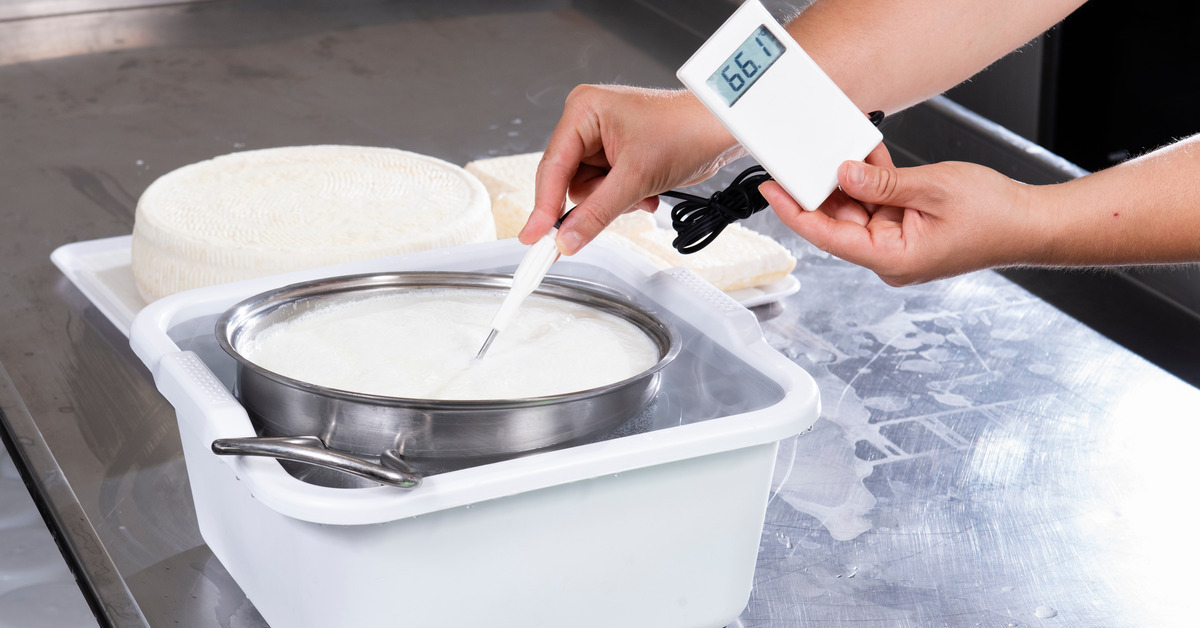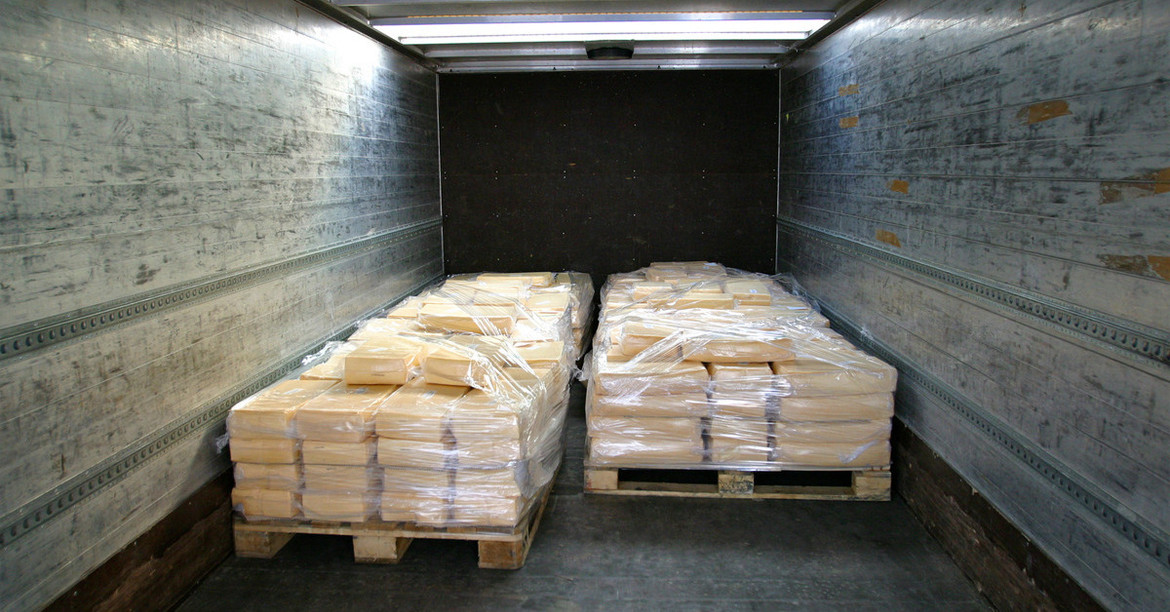3rd Feb 2025
The Importance of Temperature Control in Dairy Operations
Temperature control is the backbone of successful dairy operations. Dairy products, such as milk, cheese, and yogurt, are highly perishable and sensitive to temperature fluctuations.
Without precise temperature regulation, spoilage, contamination, and financial losses become inevitable. Let’s explore the importance of temperature control in dairy operations and learn some best practices to ensure product quality and safety.
Ensuring Product Quality Through Temperature Control
Temperature directly impacts the quality of dairy products. Milk and other dairy items contain proteins, fats, and microorganisms that react to environmental changes.
When stored at improper temperatures, these reactions can lead to souring, clumping, discoloration, and an unpleasant texture. Such changes can affect a product’s taste and reduce its nutritional value, making it less appealing to consumers.
Maintaining a temperature range of 34°F to 40°F for fluid milk ensures its freshness and flavor. Dairy companies must store cheese at different temperatures based on its type. Dor instance, soft cheeses require cooler storage (around 34°F), while hard cheeses can tolerate slightly higher temperatures (around 40°F).
Ice creams, butter, and yogurts also have specific temperature requirements to retain their intended texture and flavor. By adhering to these temperature standards, buyers and inventory managers ensure that customers receive high-quality dairy products.
Reducing Foodborne Illness Risks

Proper temperature control is essential for reducing the risk of foodborne illnesses. Dairy products are a prime breeding ground for bacteria such as Listeria monocytogenes and Salmonella, which can thrive in improper storage conditions. Even small lapses in refrigeration can allow harmful bacteria to multiply rapidly, leading to contamination and significant consumer health risks.
Regulatory bodies, including the FDA, mandate strict temperature control protocols to mitigate these risks. For instance, raw milk or artisan cheeses require extra vigilance as they’re more susceptible to contamination.
Inventory buyers should prioritize suppliers and transporters who adhere to these guidelines and demonstrate a proactive approach to maintaining high safety standards, such as implementing real-time monitoring systems. This approach helps dairy products remain safe throughout the supply chain, from production to the final consumer, reducing liability risks and protecting public health.
Extending Shelf Life of Dairy Products
Temperature control plays a significant role in extending the shelf life of dairy products. Properly refrigerated dairy can last significantly longer, reducing waste and saving costs.
For example, milk has a shelf life of seven to 10 days when stored at optimal temperatures, while yogurt can last up to two weeks. Cheese varieties can have even longer shelf lives if stored under precise conditions.
By maintaining ideal storage temperatures, the natural degradation of proteins and fats in dairy products slows down significantly. This preservation minimizes the growth of spoilage microorganisms, ensuring that products remain fresh for a longer period.
Additionally, temperature stability during transportation, particularly in refrigerated trucks, prevents temperature spikes that could accelerate spoilage. Inventory buyers benefit from reduced spoilage costs when they invest in temperature-controlled storage and transport systems.
Moreover, extended shelf life gives retailers more flexibility in stocking and selling products. They can plan promotions, avoid overstocking, and manage inventory turnover more efficiently.
This increased efficiency improves profitability and creates a better customer experience, as consumers consistently receive fresh and high-quality dairy products. By prioritizing investments in reliable cold chain infrastructure, the entire supply chain benefits from a reduction in waste and enhanced operational efficiency.
Key Technologies for Temperature Control
Modern technology has revolutionized temperature control in dairy operations, ensuring precision and reliability across the supply chain. Refrigerated trucks equipped with GPS-enabled temperature monitoring systems maintain consistent cooling during transport, minimizing temperature fluctuations that could compromise product quality. Additionally, cold storage warehouses now utilize advanced automation systems to maintain uniform air circulation and temperature stability.
IoT (Internet of Things) sensors are also useful, providing real-time temperature data that companies can access remotely. These sensors alert operators immediately if temperatures deviate from preset thresholds, allowing for swift corrective actions. Automated temperature logging systems simplify compliance with regulatory requirements by providing accurate records, eliminating the risk of manual data entry errors.
Another innovative technology is the use of phase-change materials (PCMs) in packaging, which help maintain consistent temperatures during transport. Buyers should seek partnerships with suppliers who integrate these advanced technologies into their operations, ensuring the highest levels of product safety and quality throughout the supply chain. By embracing these tools, the dairy industry can improve efficiency, reduce waste, and uphold stringent quality standards.
Importance of Training and Procedures
Trained personnel also play a role in temperature control. Employees handling dairy products must understand temperature's critical role in preserving quality and safety. Comprehensive training programs equip staff with the knowledge to identify and address temperature-related challenges.
Additionally, standard operating procedures (SOPs) for loading, unloading, and storage ensure that each step in the process aligns with best practices. Purchasing agents should verify that suppliers have these measures in place, as they reflect a commitment to delivering high-quality products.
Addressing Challenges in Temperature Control

Despite technological advancements, challenges in temperature control persist, requiring proactive solutions. Power outages can disrupt refrigeration systems, leading to potential spoilage.
To counter this problem, suppliers and storage facilities must invest in backup generators and uninterrupted power supply (UPS) systems. These contingency measures help refrigeration systems remain operational even during emergencies.
Equipment malfunctions are another common issue. Routine maintenance and regular inspections of refrigeration units are essential to prevent unexpected breakdowns. Suppliers should implement predictive maintenance practices, using sensors and analytics to identify problems before they escalate.
Human errors, such as improper loading practices or incorrect thermostat settings, can also compromise temperature control. Comprehensive employee training programs are critical for minimizing these errors. Training should cover proper handling techniques, the importance of maintaining cold chain integrity, and quick responses to temperature deviations.
By establishing partnerships with reliable vendors who prioritize proactive measures, inventory buyers can mitigate risks and maintain the consistent quality of dairy products. Investing in robust contingency plans and operational safeguards strengthens the resilience of temperature-controlled supply chains, protecting profitability and consumer trust.
Sustainability and Energy Efficiency
Sustainability is an increasingly important aspect of temperature control in dairy operations. Energy-efficient refrigeration systems reduce operational costs and minimize environmental impact. Innovations such as solar-powered refrigeration and energy-efficient compressors can transform how the dairy industry addresses its carbon footprint.
Purchasing agents can contribute to sustainability by selecting suppliers who invest in eco-friendly technologies. These initiatives align with consumer demand for environmentally responsible products, enhancing brand reputation and customer loyalty.
Recorders Charts & Pens: Helping Dairy Companies Ensure Temperature Control
Workers throughout the dairy supply chain understand the importance of temperature control in dairy operations. By leveraging modern technologies, adhering to strict protocols, and investing in energy-efficient solutions, the dairy industry can continue to thrive. Buyers and inventory managers play a pivotal role in selecting reliable partners and implementing robust systems to maintain quality control.
Incorporating tools, such as circular charts,for tracking and monitoring temperature can enhance operational efficiency. Visit Recorders Charts and Pens for data recording equipment that can help dairy operations protect public health and maintain profitable operations.

